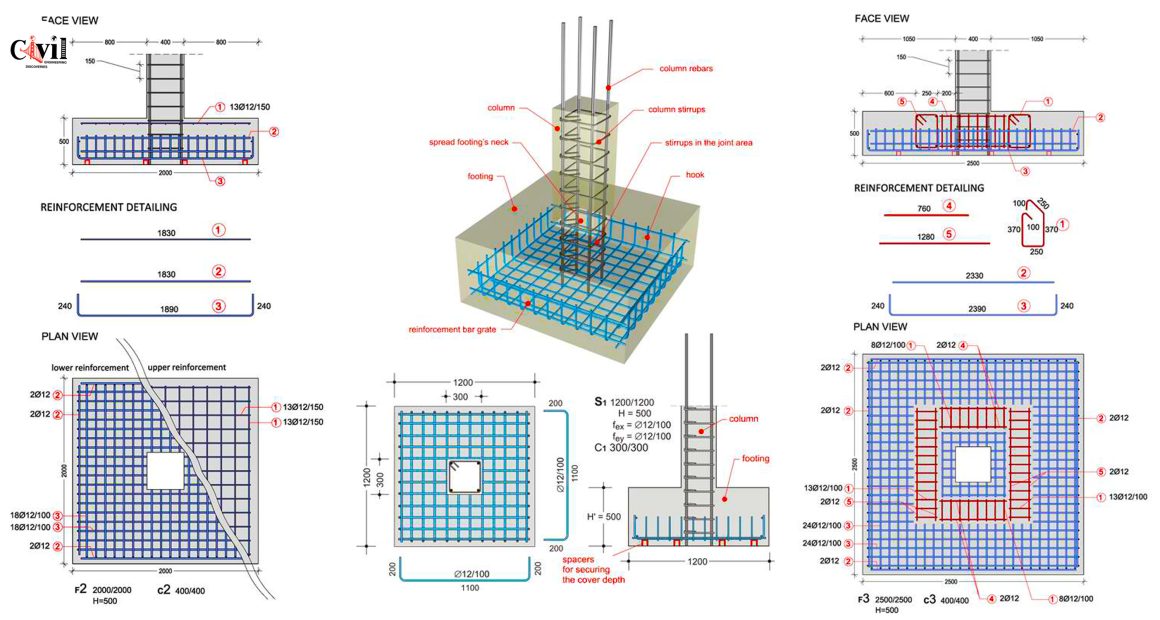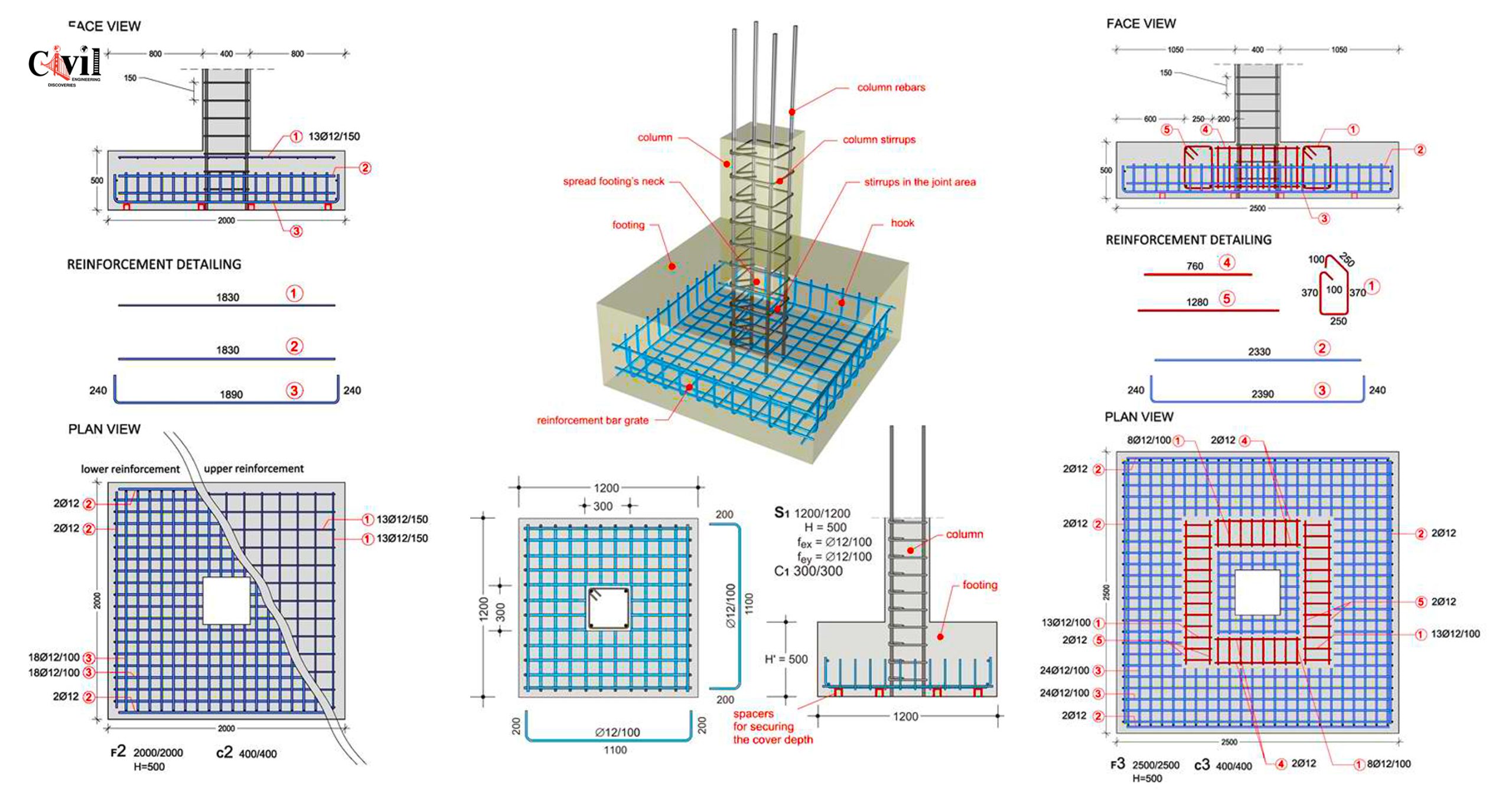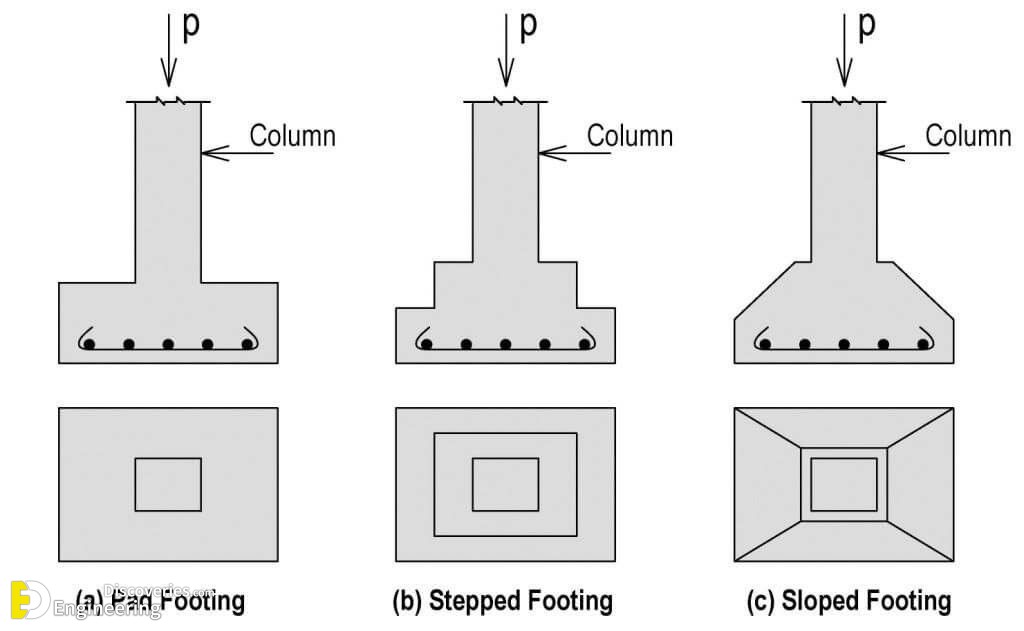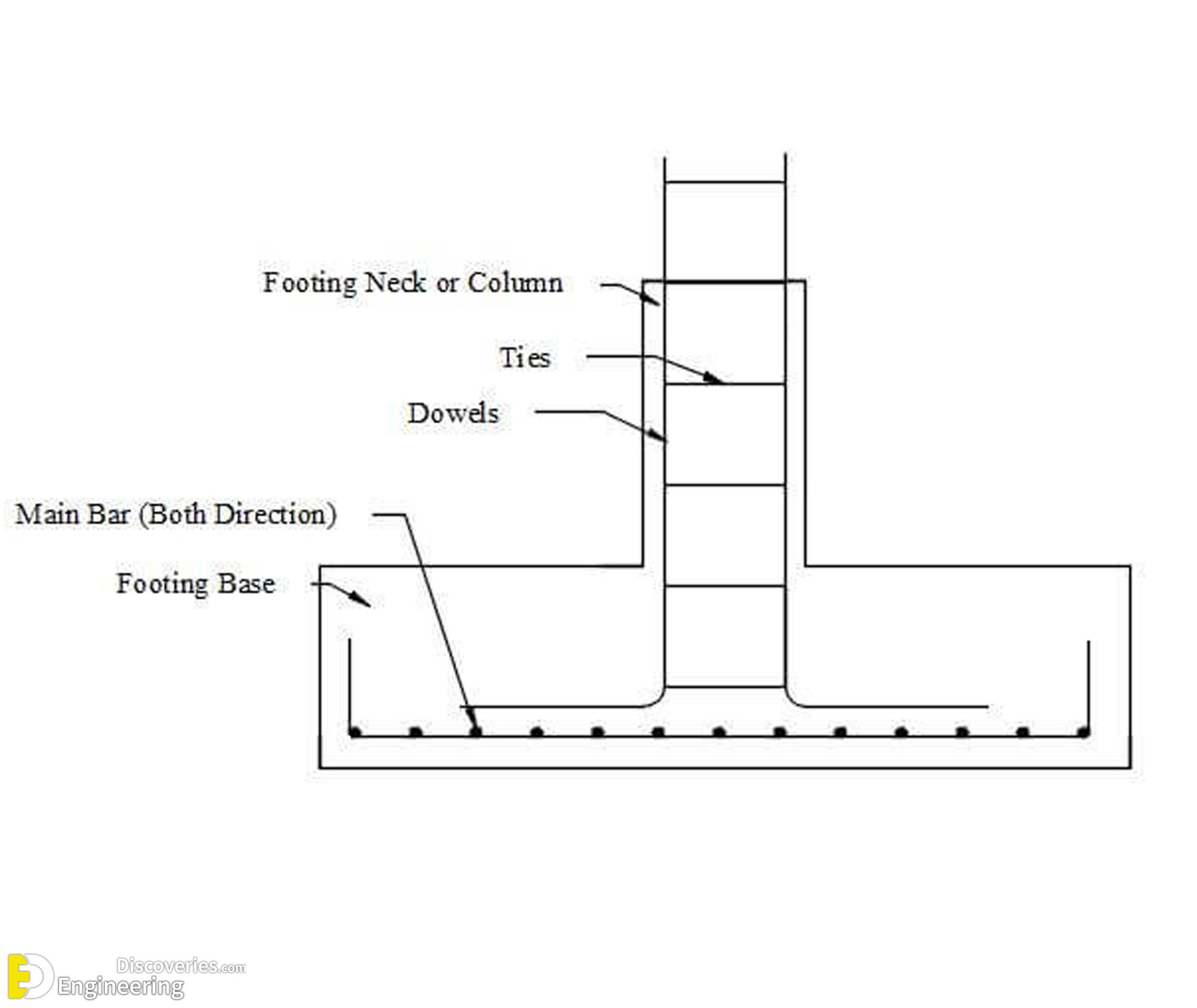Reinforcement Detailing Of Isolated Footing
There are several sorts of foundations dependent on a number of factors. The isolated footing is one of the most common and basic forms of foundations used across the world. The foundation is critical to the structure. The foundation eventually transfers the whole load of the structure to the earth. Because they are simple and cost-effective, isolated footings are the most widely utilized footings for Reinforced cement concrete columns. A solitary column is supported by an isolated footing. Isolated footings are individual footings given for each column.
This form of footing is employed in situations where
1. The columns are not evenly spaced.
2. Footing loads are reduced.
3. The soil’s safe bearing capability is normally high.
The isolated footings are simply a bottom slab. Bottom slabs are classified into three categories.
1. Pad footing (consistent thickness)
2. Stepped footing (uneven thickness)
3- Trapezoidal footing (slanted)
Detailing of isolated footing reinforcement includes
1. Reinforcement concrete cover
According to IS 456-200, the minimum thickness of the primary reinforcement in the footing shall not be less than 50 mm if the footing is directly in touch with the soil surface, and 40 mm for externally exposed faces such as surface leveling PCC. If surface leveling is not employed, a 75 mm cover is necessary to cover the uneven surface of the excavation.
2. Requirements for minimum reinforcement and bar diameter
The minimum reinforcement must be 0.12 percent of the overall cross-sectional area. The primary reinforcement should have a minimum diameter of 10 mm.
3. Footing Reinforcement Distribution
The reinforcement in one-way RCC footing is distributed consistently throughout the whole width of the footing. The reinforcement extending in both directions is spread consistently throughout the whole width of the footing in two-way square footings. However, reinforcement is spread throughout the whole width of the footing in the long direction in the case of two-way rectangular footings. However, in the short direction, reinforcement is distributed in the middle band according to the equations below. The remaining reinforcement is placed evenly on both sides of the core band in the short direction.
Reinforcement in central band/Total reinforcement in short direction= 2/(x/y)+1
Where y is the long side and x is the short side of the footing.
4. Dowel reinforcement
Dowel reinforcement is used to connect the isolated footing to the column above. The development length of dowel bars into the column and the isolated footing should be specified and clearly depicted in the design drawings in terms of dowel reinforcement development length.
5. Spliced lap
Dowel splice length and column reinforcement must be clearly displayed. Anchorage of both flexural and dowel reinforcement lengths must be verified to prevent bond failure of the dowels in the footing and lap splice failure between the dowels and the column bars.



























